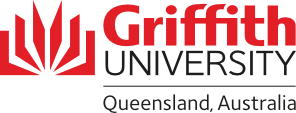Please note that this is an on-going project.
Project Description
This PhD project aims to assess the viability of RWS as a growing medium for Trees on Buildings. Specific objectives of the project are: To identify the most suitable RWS design for Trees on Buildings, to discover the most compatible tree species for Trees on Buildings in Brisbane, and to propose a conceptual framework that for RWS design and applications. To achieve the aim and objectives, this research is designated for laboratory experiments for physicochemical and biological parameters and on two types of field trials on top of the N44 building at Nathan Campus, Griffith University.
In terms of the global context, this would be the first research focusing on substrate design for trees on building and the first of its kind assessing the viability of lignin in plant cultivation as a constituent for soil substrates. Unlike previous research studies that focus solely on particular substrate behavior using a predefined substrate mix, this research aims to propose a comprehensive set of methodologies that encapsulates physical, chemical, and biological analysis for selecting suitable substrates for trees on building and will find the influential parameters on substrate selection for trees on buildings. In terms of Australian contexts, this study research in Australia will successfully yield Australian endemic and Native trees on top of the buildings within the urban infrastructure.
Project Personnel and Beneficiaries
The study’s comprehensive methodology for intensive green roof substrate design in Australian conditions promises globally applicable outcomes, ensuring repeatability and generalizability across regions that would benefit the researchers, students, environmentalists, agronomists, and stakeholders. This study combines expertise from agriculture, materials science, civil and environmental engineering, and sustainability to tackle complex challenges, benefiting from diverse insights.
Outcomes to Date
To date, a systematic literature review (SLR) has been conducted to map the scientific literature, state-of-the art findings, and research gaps. The article got successfully published in Science of the Total Environment. Two more SLRs are already being finalized and will be submitted to the journals within the end of 2024.
Laboratory experiments are currently being conducted to discover the best-fitting substrate designs to be escalated for field trials, fitting to Brisbane’s subtropical climate for Trees on Buildings. An experiment-based manuscript is also being drafted at the moment and anticipated to get published by 2025.
Project Significance
Through repurposing waste materials and reducing carbon footprints in substrate production, the project aligns with UN Sustainable Development Goals (SDGs) and fosters regenerative business models based on waste management and ecosystems services.
By identifying the most suitable substrate design for Trees on Buildings in Brisbane, and through presenting a comprehensive research methodology for substrate selection within the urban ecosystems transcending geographical boundaries. This PhD project aligns with the following SDGs:
SDG 6 (Clean Water and Sanitation)
SDG 11 (Sustainable Cities and Communities)
SDG 12 (Responsible Consumption and Production)
SDG 13 (Climate Action)
SDG 15 (Life on Land)

